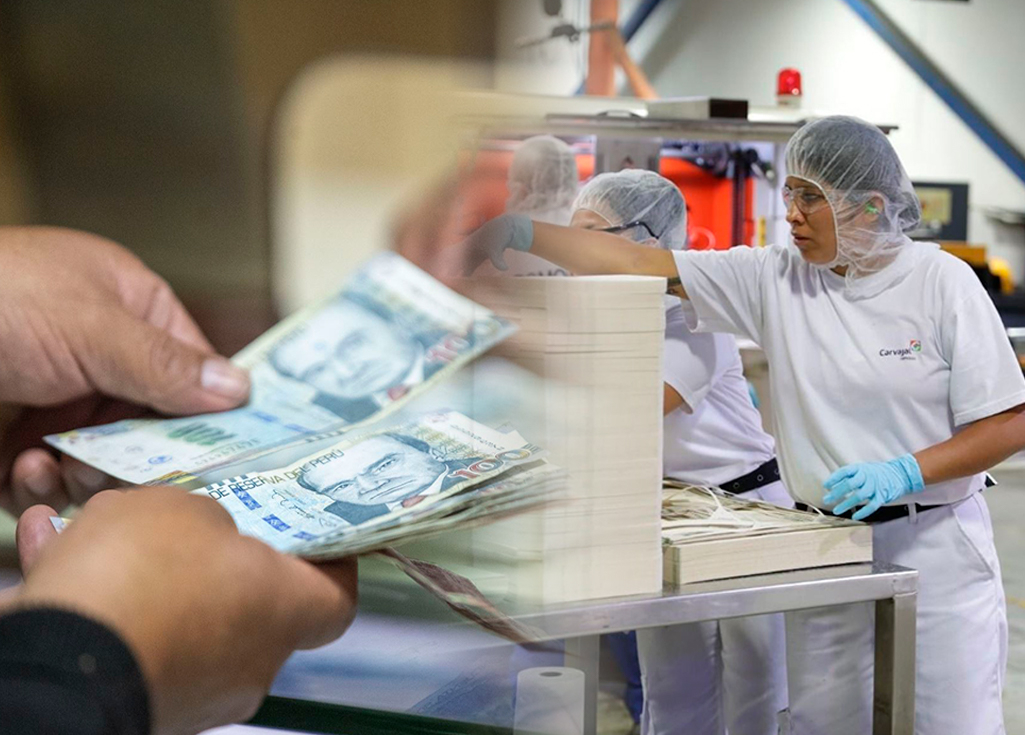
Just over two years ago, the minimum wage (RMV) in Peru rose to S/95 to S/1,025. With the passage and weight of inflation and blows to the economy, the amount has become obsolete, according to the working mass.
A year ago, the president Dina Boluarte He promised to raise the RMV as long as national production is auspicious. That was not the case. The economy fell to its worst level in more than three decades —not counting the pandemic—. Even so, public opinion did not stop debating the need to raise the RMV. This cause is sleeping the sleep of the righteous. Not even the National Labor Council (CNT) has been able to debate it —not only because of the interruption of dialogue from the business front— but also because of the lack of will of the Boluarte regime.
Workers, for their part, do not trust the ministers in power and believe that there is no will to aim for a new increase.
Formula ready
Beyond the political opportunity of raising the minimum wage, There is a mechanism approved in the CNT, back in 2007, to increase the RMV while respecting the criteria of inflation and productivity.
Former MTPE Vice Minister of Employment Fernando Cuadros Luque stresses that if the inflation and productivity criteria were applied, The minimum wage should be S/1,168together with the update provided by the International Labour Organization (ILO).
“If these criteria had been used since 2007, the RMV should have been S/1,249. There is room to increase it,” added the labor lawyer.
Trade union representatives such as Gustavo Minaya (CGTP) and Winston Huamán (CITE) have told this newspaper that the government is not willing to listen to workers. Although only one million formal employees live on the minimum wage,This amount has been devalued because it is no longer enough to cover the basic basket.Cuadros details.
“We are in favour of social dialogue, but that does not happen in the National Labour Council. It is difficult, and we always find a wall where businessmen and the State are together,” Huamán summed up.
It is necessary to clarify that Peruvian RMV is the third lowest in Latin Americaand reaches an average of US$4243. We only surpass Argentina (US$145) and the Dominican Republic (US$243).
Fronts such as the CGTP demand that the basic payment be raised progressively – within a period of five years at the most – to S/2,400 in order to cover essential products and services for citizens. In recent days, the heads of the Economy and Finance portfolios, as well as the Labor and Employment Promotion portfolio, have not ruled out this increase.
Side effects of raising RMV
● Raising the RMV generates an impact on a series of areas linked to labor rights.
● In this way, if the minimum wage increases, the family allowance increases (10% of the RMV).
● Similarly, the contribution to EsSalud (9% of the RMV) increases and the same would happen with the contribution to the ONP (13% of the RMV).
● In the case of remuneration for night work there would also be an improvement, since it is the RMV plus 35%.
● Furthermore, the subsidy of the modalities is aligned with the new value of the RMV.
● The daily wage in the agricultural sector will also improve if the minimum wage is raised. Currently, it is S/34.17 per day.
THE KEY
● Peru’s GDP will end 2024 above the 3.1% projected by the Government, said Minister José Arista of the MEF. Speaking to InPerú, Arista updated the annual projection to 3.2%.
Source: Larepublica
Alia is a professional author and journalist, working at 247 news agency. She writes on various topics from economy news to general interest pieces, providing readers with relevant and informative content. With years of experience, she brings a unique perspective and in-depth analysis to her work.












